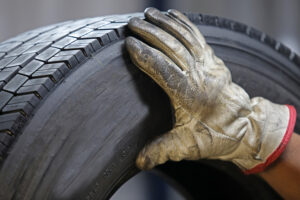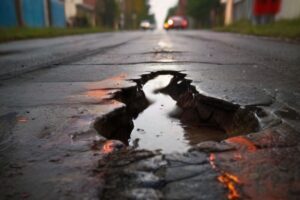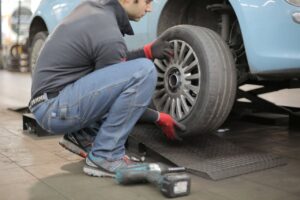What Is A Bald Tyre And How To Spot One
It’s common driver knowledge that tread depth is an extremely crucial component to driving safely as it provides grip to the road surface, which prevents vehicles from losing traction. However, the more drivers use their tyres, the more of the tread will begin to wear away. Thus, if they aren’t replaced at the correct time, they will begin to bald, which could lead to dangerous (and costly) implications.
According to Halfords, around four million cars are driven on roads with bald tyres. Thus, suggesting that many of the motorists on the road are unaware of the dangers of driving carelessly.
A bald tyre is one that has lived its life to the fullest, so much so that the rubber has gradually worn down through contact with road surfaces. In some cases, bald tyres have no tread at all, which makes it impossible to create friction with the road, subsequently causing accidents.
Bald tyres can vary in regards to their severity: either they may be completely degraded down to a smooth surface, or they will begin balding with a little amount of tread left on them. Whatever the severity of tyre baldness, if caught, road users may be fined up to £2,500 or have their licence revoked for dangerous driving.
The danger of bald tyres can include aquaplaning. Having no tread on a tyre means that there is no way the water can evacuate from a tyre, rather it will create a lubricated film across the tyre and the road. The second danger is that bald tyres lose pressure extremely quickly. This, in turn, will affect how fuel-efficient the vehicle is and the performance of it.
Likewise, bald tyres are susceptible to tyre punctures as opposed to tyres with more than minimum legal tread depth (more than 1.6mm). This is because greater tread depth tyres feature grooves and sipes that provide a certain amount of protection from glass and other road debris.
Without tread, a tyre will slip and slide during wet and snowy conditions, making them ineffective to be driven in hazardous weather conditions. Snow and rain cannot be displaced on bald tyres, which will, therefore, make a road user more likely to cause an accident.
Finally, bald tyres can cause unsafe heat build-up. Tyres with good tread help to prevent massive heat buildup as the tyres are continuously in contact with the road. This is due to the treads allowing air to circulate through the grooves of a tyre. However, bald tyres have no tread and therefore, the airflow will be significantly reduced, which can lead to tyre blowouts.
All in all, it is vital that you keep on top of your tread depth. If you begin to notice the tread wearing down, it is time to replace your tyres. Always take driving seriously and pay attention to all components of your vehicle to keep yourself and others safe at all times.




